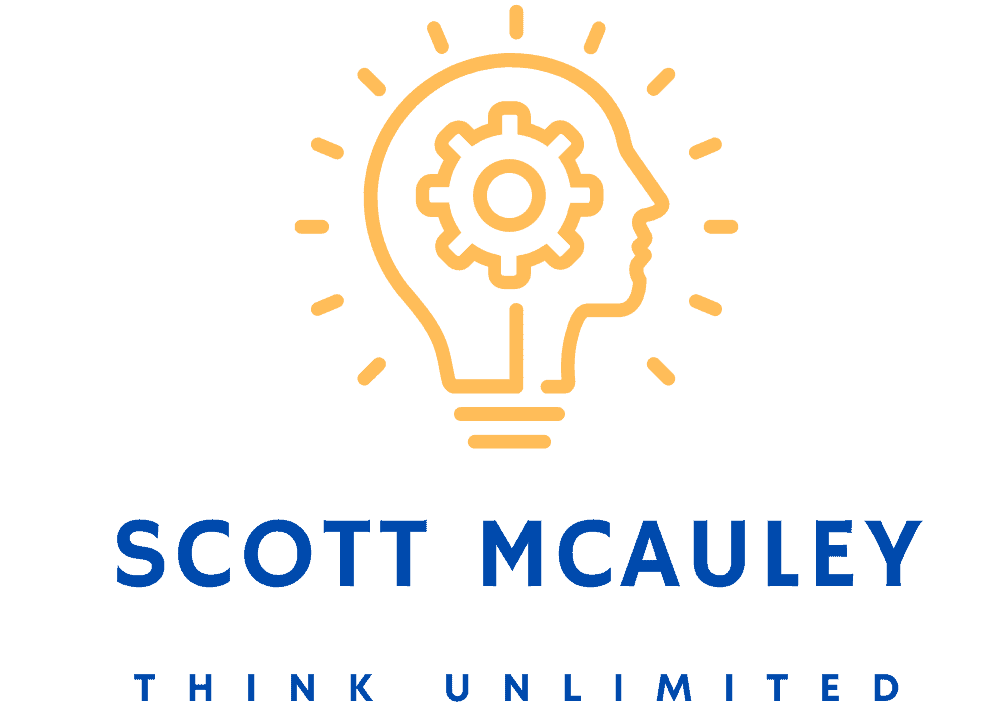Automation is revolutionizing task management. By 2024, Gartner predicts 69% of daily management tasks will be automated. Make.com helps users streamline workflows and boost productivity. 90% of workers report improved productivity with automation.
Automation also strengthens customer and stakeholder relationships for 80% of workers. As businesses embrace automation, optimizing Make.com scenarios becomes crucial for efficiency. Make.com offers powerful solutions for various industries.
Make.com’s Social Media Scenarios automate social media activities across networks. This saves time and increases engagement without manual intervention. Workflow automation has diverse applications in healthcare, banking, retail, and more.
AI-powered no-code tools maximize workflow automation benefits. These tools enable automation without writing code. Businesses can boost productivity and eliminate redundancies through automation.
Automating workflows frees employees from mundane tasks. This allows them to focus on high-value work, increasing overall productivity and efficiency.
Key Takeaways
- Automation is set to handle a significant portion of daily management tasks by 2024
- Make.com offers powerful tools for automating social media activities and workflows
- No-code workflow automation tools enable businesses to streamline processes without coding
- Automating workflows boosts productivity, eliminates redundancies, and increases efficiency
- Freeing employees from mundane tasks allows them to focus on high-value work
Understanding the Basics of Make.com Scenarios
Make.com simplifies complex workflows, boosting productivity. It offers over 25 ChatGPT workflows for various business tasks. Users can save hours each week, enhancing efficiency across their operations.
What is Make.com?
Make.com is a no-code automation tool for creating intricate scenarios. It connects various apps and services to automate repetitive tasks. Social Media Scenarios can automate tasks across multiple social networks without manual intervention.
Key Components of a Scenario
The building blocks of a Make.com scenario include:
- Modules: Individual apps or services that perform specific functions
- Triggers: Events that initiate the execution of a scenario
- Actions: Steps taken by the scenario in response to triggers
- Connections: Links between modules that facilitate data transfer
Users can create powerful automations spanning multiple platforms. For example, they can automatically post content from Instagram to Twitter and Facebook.
Benefits of Using Make.com
Implementing Make.com scenarios offers numerous advantages, including:
| Benefit | Description | Impact |
|---|---|---|
| Time-saving | Automating repetitive tasks | Hours saved each week |
| Increased engagement | Timely interactions with audience | 22% increase in reviews received |
| Improved consistency | Seamless cross-platform integration | Enhanced social media presence |
| Data-driven insights | Gathering analytics from various platforms | Better understanding of audience behavior |
Make.com can significantly improve social media management. Users can set up their first Social Media Scenario easily. The platform offers an intuitive drag-and-drop interface and customizable templates.
Make.com has revolutionized the way we approach social media management. The time we save allows us to focus on crafting compelling content and engaging with our audience on a deeper level.
Analyzing Your Current Scenarios
Examine your Make.com scenarios to boost efficiency. Look for bottlenecks, gather usage data, and check task performance. This analysis helps improve your automations.
Identifying Bottlenecks
Find the snags slowing down your automations. These can be poor module setups or slow data flow. Check each step carefully to spot and fix these issues.
Scenario analysis helps businesses study financial outcomes. It uses models to test different situations. This method builds likely scenarios based on key factors.
Gathering Usage Data
Collect thorough usage data to make smart choices. Make.com shows operation and transfer use since the last reset. Use the Make API to get this data for analysis.
Content bot automation can speed up your workflows. Mix APIs from ChatGPT, Perplexity, and your systems. This combo creates content for various industries.
Assessing Task Performance
Check how each task in your scenarios performs. Watch the run time, success rate, and errors. This info shows where you need to make improvements.
Scenario analysis helps make smart choices and manage risks. It shows possible outcomes and helps create strong, flexible plans.
Scenario analysis improves planning, risk management, and decision-making. It helps spot trends, boost agility, and find new chances.
Streamlining Your Workflow
Make.com offers a user-friendly interface for building automated workflows. Both technical and non-technical users can create complex scenarios without coding. This simplicity allows for efficient handling of intricate business processes.
Simplifying Your Automations
Make.com lets you connect various services to create automated “scenarios”. The platform supports over 1,900 connectors for integrating tools into workflows. This makes it easy to streamline processes across departments.
Reducing Redundant Steps
Identify critical processes and define clear objectives to reduce workflow redundancy. Make.com’s visual simplicity helps agile teams iterate quickly. It promises to deploy solutions six times faster than competitors.
Using Modules Effectively
Make.com offers a rich library of connectors for automation across departments. Choose the right process mapping tool, like Cacoo, for visual workflow representations. Use specific symbols to understand complex processes effectively.
| Module | Usage | Benefit |
|---|---|---|
| Google Sheets | Automate data entry and updates | Reduce manual work and errors |
| Slack | Send notifications and updates | Improve team communication |
| Salesforce | Sync customer data across systems | Enhance customer experience |
Use Make.com’s modules effectively and regularly validate your process maps. This ensures smooth operations and quick issue detection. The platform scales with businesses, keeping pace as operations grow.
Implementing Triggers and Actions
Effective triggers and actions are key to efficient Make.com scenarios. Careful selection and optimization can boost your automation’s performance. This enhances productivity and streamlines your workflow.
Choosing the Right Triggers
Start by identifying events that should kick off your automation. Select triggers that match your workflow needs. For lead management, consider “new form submission” or “email received” triggers.
Optimizing Action Sequences
After choosing triggers, focus on streamlining action steps. Ensure smooth data flow between apps and services. Use Make.com’s data mapping and filtering to route information accurately.
Use 1min.ai within Make.com to automate content creation, image processing, and data analysis. This saves time and resources in your scenarios.
Managing Conditional Logic
Conditional logic creates flexible automations that adapt to various situations. Use it to route data, trigger actions, or apply filters. This helps handle complex workflows and make smart decisions.
For example, use GPT-4 modules to sort leads based on email content. This ensures quick responses to high-value opportunities. Set up filtering rules to direct leads to the right team members.
Smart implementation of triggers, actions, and conditional logic creates powerful automations. This boosts productivity and drives better business results.
Leveraging Built-in Functions and Tools
Make.com offers many built-in functions and tools to boost your scenarios. These features can streamline workflows and automate complex processes. Let’s explore how these tools can improve your work.
Utilizing Data Transformations
Data transformations are key for handling information in your scenarios. Make.com has functions to easily transform data, like formatting dates or doing math.
These tools ensure your data is ready for further use. By using them, you can process information more efficiently.
Incorporating Scheduling Features
Make.com’s scheduling features help automate your workflows. You can set triggers based on time or events. This saves time and reduces errors.
Automated scheduling leads to better productivity and reliability. It’s a crucial part of efficient automation.
Exploring API Integrations
API integrations extend your Make.com scenarios’ capabilities. They connect you to external services and platforms. Make.com supports many API integrations, including Salesforce and Google Sheets.
These connections allow for more complex workflows. You can create automated systems that work across multiple platforms.
Implementing Function Calling can lead to significant cost savings for businesses by automating routine tasks and minimizing the need for human oversight. Companies are experiencing 40% in annual savings and process times cut by up to 70% with intelligent process automation.
Make.com’s built-in functions and tools can greatly improve your scenarios. They offer ways to handle data, schedule tasks, and connect systems.
By using these features, you can create powerful, efficient workflows. Embrace these tools to get the most out of Make.com.
Collaborating with Team Members
Collaboration enhances Make.com scenarios and boosts efficiency. Team members’ insights create better automations. Well-calibrated teams avoid duplication and increase productivity.
Calibrated teams reduce errors and rework. This leads to more efficient task completion.

Sharing Scenarios for Feedback
Share scenarios with team members for valuable feedback. Their knowledge can identify improvements and new approaches. Effective calibration promotes open communication among team members.
Phoenix’s Real-Time Collaboration Engine integrates project management tools. This enhances team communication effectively.
Documenting Your Workflow
Document your workflow to ensure everyone understands. Capture scenario steps, explain automation logic, and outline dependencies. Calibrated teams use standardized processes for consistent product development.
Phoenix’s AI Workflow Tracker gives managers full visibility. They can monitor ongoing projects and team performance.
Collaboration is the key to unlocking your team’s full potential and driving innovation in your automations.
Establishing Best Practices
Create best practices for scenario development and optimization. Include guidelines for naming, design, testing, and performance monitoring. Calibrated teams share knowledge and encourage diverse perspectives.
Set clear goals aligned with organizational objectives. Implement regular team meetings for effective product team calibration.
Team collaboration, scenario sharing, and workflow documentation optimize Make.com automations. Phoenix’s AI Collaboration Tools support remote teams. They ensure smooth collaboration and connectivity.
Testing and Monitoring Scenarios
A solid testing and monitoring strategy is key for Make.com scenarios. Set up test cases, track performance metrics, and tweak based on feedback. This approach helps catch issues early, keeping your workflows smooth.
Setting Up Test Cases
Comprehensive test cases are vital for optimizing scenarios. Load testing helps find bottlenecks and performance issues before deployment. It’s best to include load testing in CI/CD pipelines.
Stress testing checks how apps behave under extreme conditions. It helps identify breaking points and assess stability under pressure.
Monitoring Performance Metrics
Keep a close eye on key performance metrics for your scenarios. Automated tests are faster and more consistent than manual ones. They provide quick feedback and reduce human error.
Important metrics to watch include response time, throughput, and resource use. Tools like JMeter and Gatling are great for automated testing.
- Response time
- Throughput
- Resource utilization
Integrate these tools with CI/CD platforms like Jenkins and GitLab CI. This setup allows for seamless, automated testing.
Adjusting Scenarios Based on Feedback
Use data from testing to improve your scenarios. Focus on high-risk test cases for the best return on investment. Choose the right automated testing tool for your needs.
Review and refactor tests regularly to optimize execution time. Good documentation helps with understanding and future maintenance.
Continuous improvement is the key to achieving maximum efficiency with your Make.com scenarios.
Embrace scenario testing, performance monitoring, and feedback-based adjustments. This approach ensures your automations always run at their best.
| Testing Type | Purpose |
|---|---|
| Load Testing | Assess system behavior under expected user loads |
| Stress Testing | Evaluate application behavior under extreme conditions |
| Endurance Testing | Examine application performance over extended periods |
Staying Updated with Make.com Features
Staying informed about Make.com updates is vital for optimizing your automation workflows. New tools and features can help streamline processes and boost productivity.
Following Release Notes for New Tools
Make.com regularly releases new tools and platform enhancements. The official release notes provide details about new modules and improved functionality.
By using these new tools in your scenarios, you can automate tasks more effectively. This helps reduce errors and save time.

Participating in Community Discussions
Engaging with the Make.com community is a great way to learn from experienced users. You can share insights and discover innovative automation techniques in forums and social media channels.
Active participation helps you gain knowledge and find inspiration for new automations. It also allows you to contribute to the Make.com user community.
Here are some popular Make.com community platforms to explore:
| Platform | URL |
|---|---|
| Make.com Forums | https://www.make.com/en/forum |
| Make.com Facebook Group | https://www.facebook.com/groups/makecom |
| Make.com Twitter | https://twitter.com/make_hq |
Attending Webinars and Workshops
Make.com hosts webinars and workshops on advanced automation techniques and best practices. Experienced experts lead these sessions, sharing their knowledge and insights.
Attending these events allows you to learn from pros and ask questions. You’ll gain practical skills to optimize your scenarios.
I’ve attended several Make.com webinars, and they’ve been incredibly valuable in helping me refine my automation strategies. The presenters always share actionable tips and real-world examples that I can apply to my own scenarios.
Check the Make.com events page and subscribe to their newsletter for upcoming webinars. These educational opportunities will help you create efficient automation workflows.
Conclusion: Achieving Efficiency with Make.com
Make.com scenarios can transform workflows, making them more efficient and impactful. Automation efficiency streamlines processes and saves time. Regular reviews, performance analysis, and feature updates help users maximize Make.com’s potential.
Recap of Best Practices
Optimizing Make.com scenarios involves simplifying automations and reducing redundant steps. Leveraging built-in functions and team collaboration are crucial for efficiency. Users can create tailored templates addressing common business issues.
Educational content like blog posts and tutorials can attract clients. These resources showcase the benefits of automation effectively.
Future Considerations for Automation
The future of automation is bright. Organizations see significant returns on generative AI investments. On average, they gain $3.70 for every $1 invested.
Access Holdings Plc cut coding time by 75%. Asahi Europe & International saved 15% of time on administrative tasks with AI solutions. Microsoft 365 Copilot improved work quality, productivity, and efficiency for businesses.
Make.com users should explore new features proactively. Adapting workflows to future automation trends maintains a competitive edge. With the right approach, users can unlock automation’s full potential and drive business growth.



